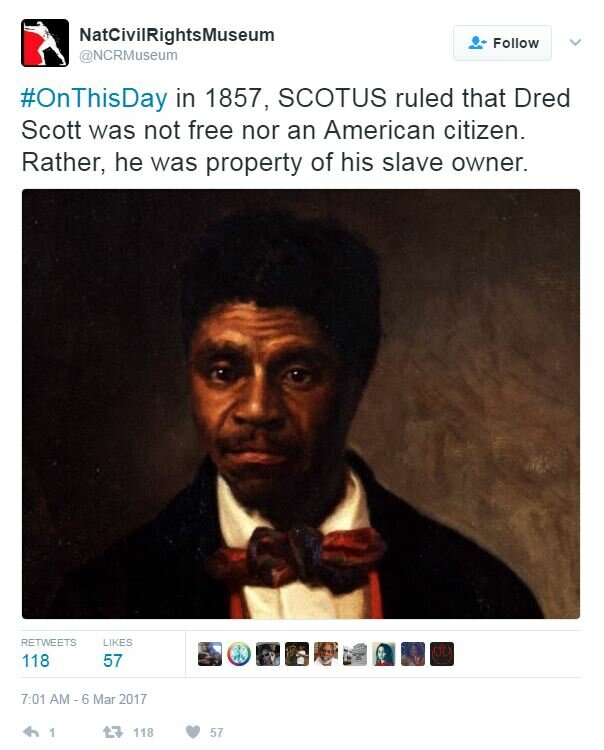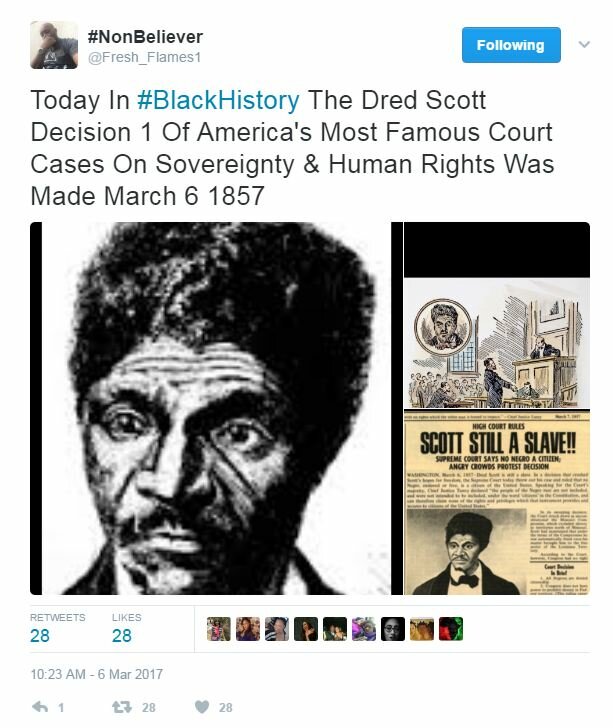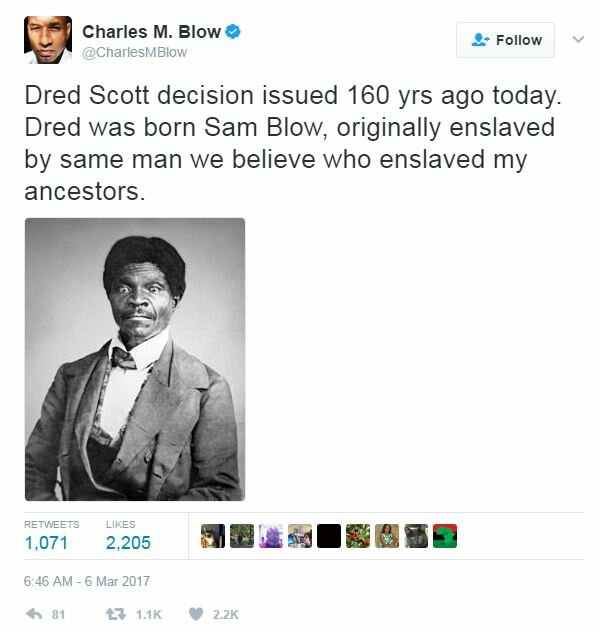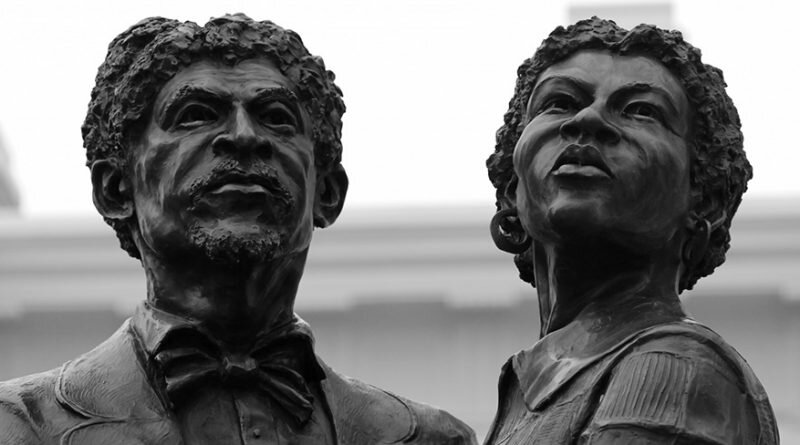On This Day The Dred Scott Decision Was Made
On March 6, 1857, the Supreme Court handed down its decision in the Dred Scott case, which had a direct impact on the coming of the Civil War and Abraham Lincoln’s presidency four years later.
The case of Dred Scott v. Sandford was one of the most controversial decisions in the court’s history. At the time, the Supreme Court’s majority came from pro-slavery states or had connections to pro-slavery presidents.
The case had been in the court system for more than a decade. Scott had been born into slavery in 1795. In subsequent years, he lived in two parts of the United States that didn’t allow slavery, Illinois and Wisconsin, along with his master.
When his current master died in 1846, Scott filed suit on behalf of himself and his wife, also a slave, to gain their freedom. The case was heard by three other courts as it made its way to Washington.
The Dred Scott decision came just two days after President James Buchanan took office, and it set the tone for his controversial term that led to the Civil War.
Chief Justice Roger Taney gave the court’s opinion; it had ruled 7-2 against Scott.

Taney announced that slaves were not citizens of the United States and had no rights to sue in federal courts, and in fact, blacks couldn’t be citizens.
“There are two clauses in the Constitution which point directly and specifically to the negro race as a separate class of persons, and show clearly that they were not regarded as a portion of the people or citizens of the Government then formed,” Taney argued.
The court also declared the Missouri Compromise of 1820 to be unconstitutional. And it said that Congress did not have the authority to prohibit slavery in the territories.
The decision was celebrated in the South and by slavery supporters. There was outrage in the North and among abolitionists.
One person who was publicly upset with the Dred Scott decision was Lincoln, who was a rising figure in the newly formed Republican Party. The Dred Scott case was a focal point of the famous debates between Lincoln and Stephen Douglas in 1858.

The decision also made the Republican Party a national force, and led to the division of the Democratic Party during the 1860 presidential elections.
The growing power of the Republicans, who received considerable support from the northern states, directly led to fears in the South that slavery would be ended, and those fears started the momentum for secession and the Civil War.
Scott died in 1858 about a year after he and his family had gained their freedom, when his owner (under pressure from her husband) sent the Scotts back to their original owners, who promptly freed them.
Taney passed away in 1864. A year later, a request to include a bust of Taney in a hall that recognized chief justices was blocked by Republicans.
“I declare that the opinion of the chief justice in the case of Dred Scott was more thoroughly abominable than anything of the kind in the history of courts. Judicial baseness reached its lowest point on that occasion,” said Charles Sumner, a leading Radical Republican.

Sumner had been brutally beaten and almost killed on the Senate floor in 1856 when he made antislavery remarks. His attacker was Representative Preston Brooks of South Carolina.
After the Civil War, the 13th Amendment and 14th Amendment effectively overturned the Dred Scott decision.
Today, the words “Dred Scott” are tossed out by politicians when they vehemently try to link a recent Supreme Court decision to a historically bad precedent. In 2010, for example, some critics compared the Citizens United v. FEC decision to it.
In 2007, Lynette Jackson, Scott’s great-great-granddaughter, told NPR on the 150th anniversary of the decision that the lesson from the case is that people should try to do what is right.
“Even if it doesn’t look like it’s going to work out, in the end, it usually does,” she said.






